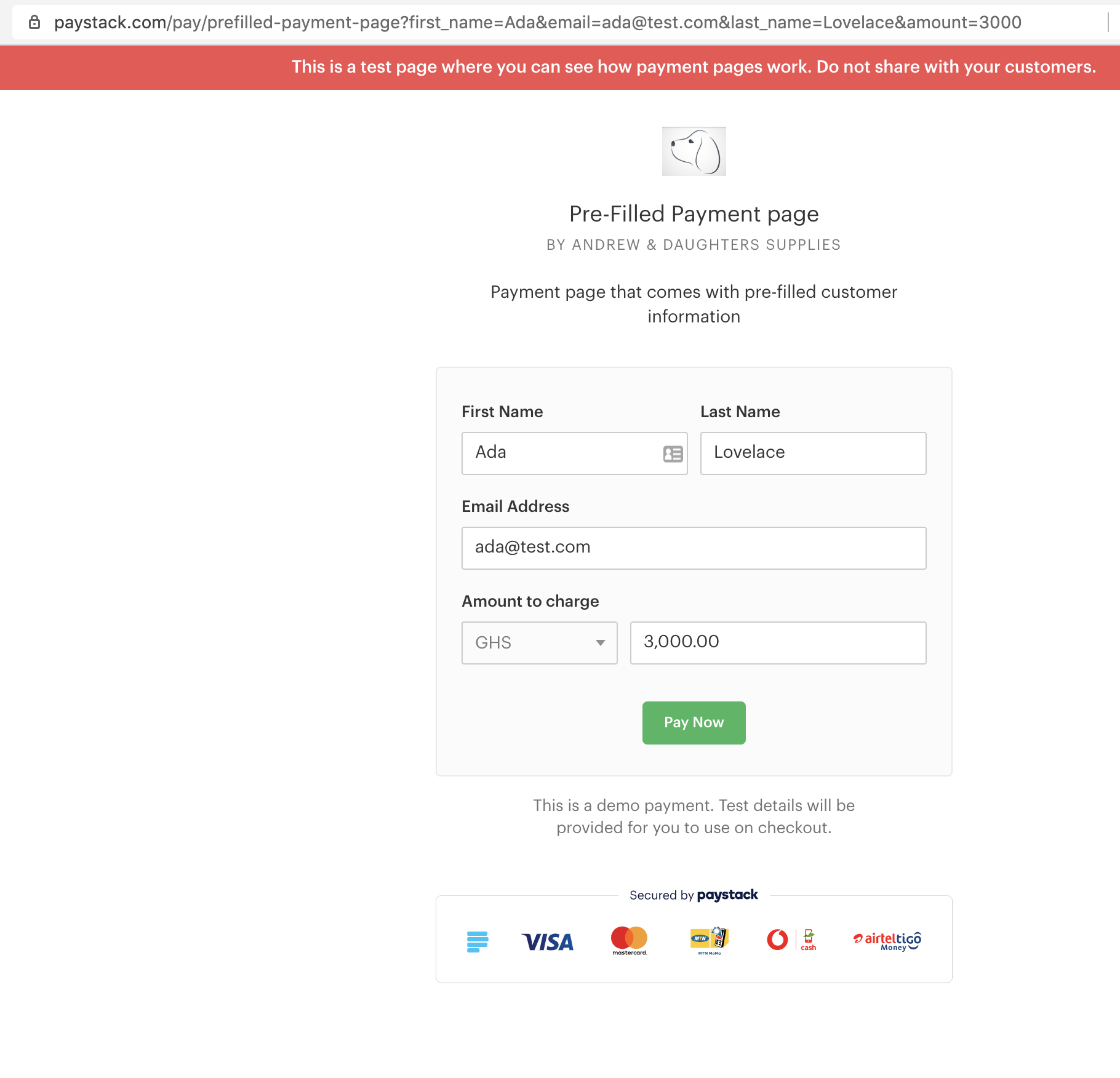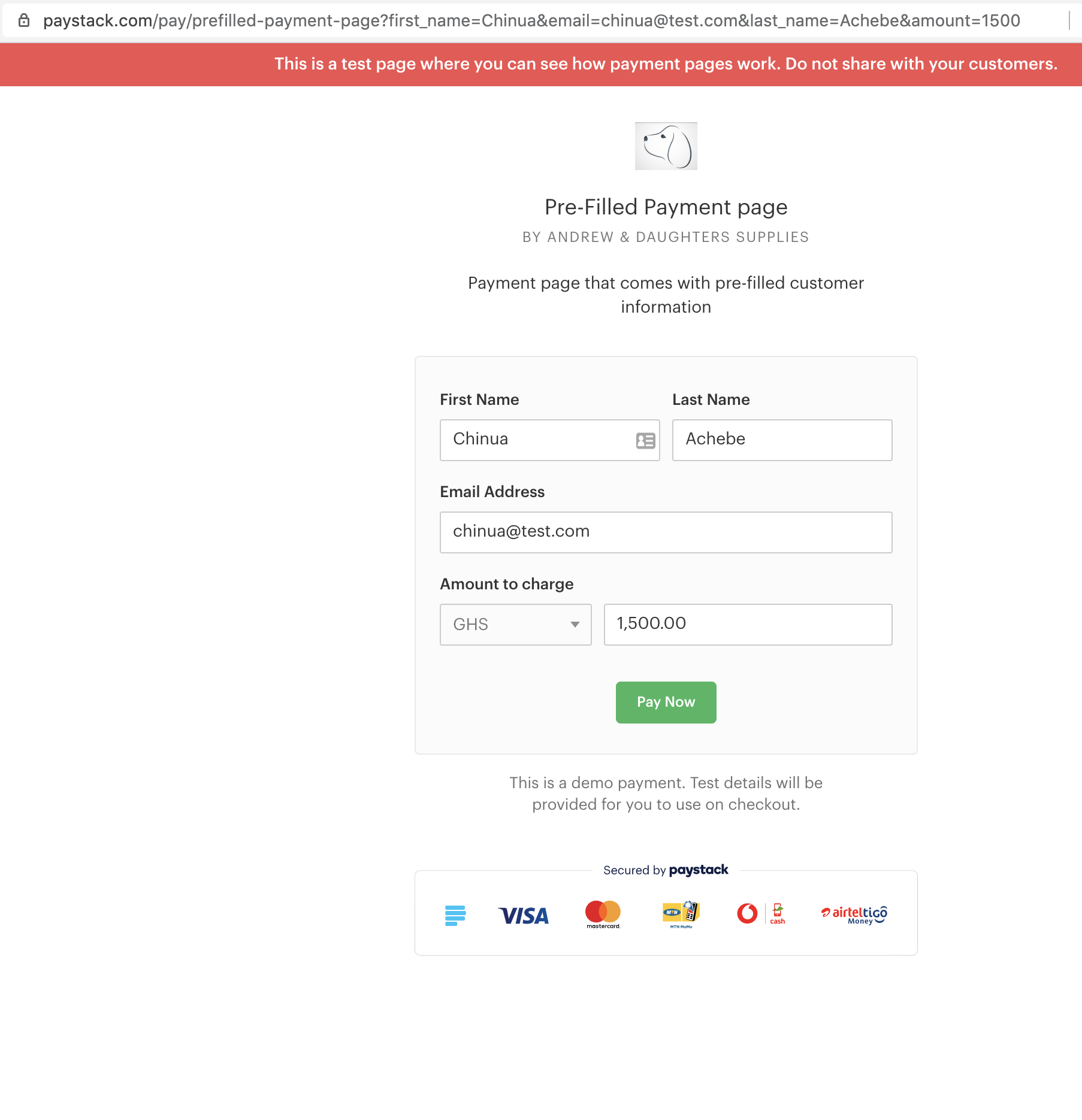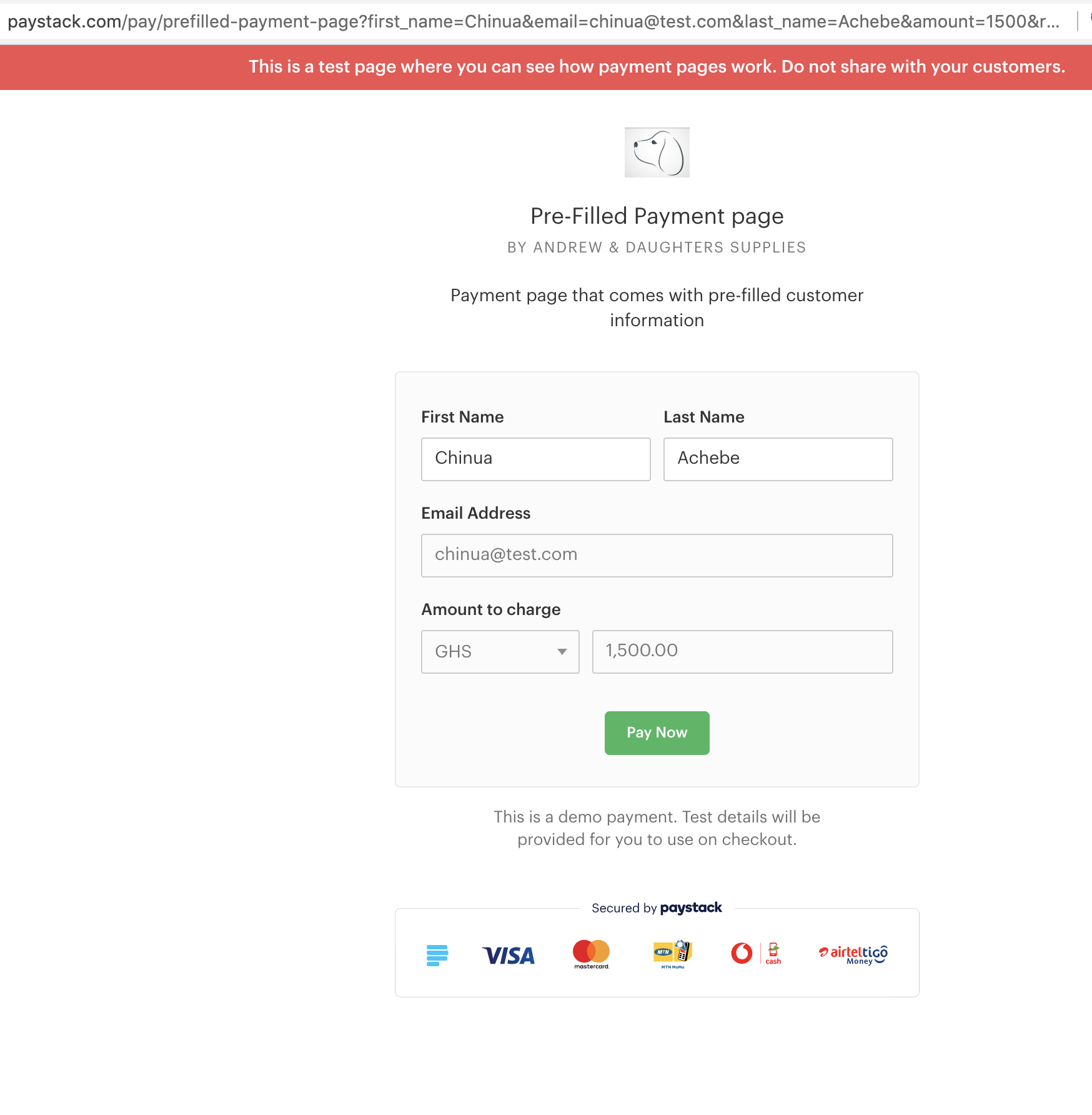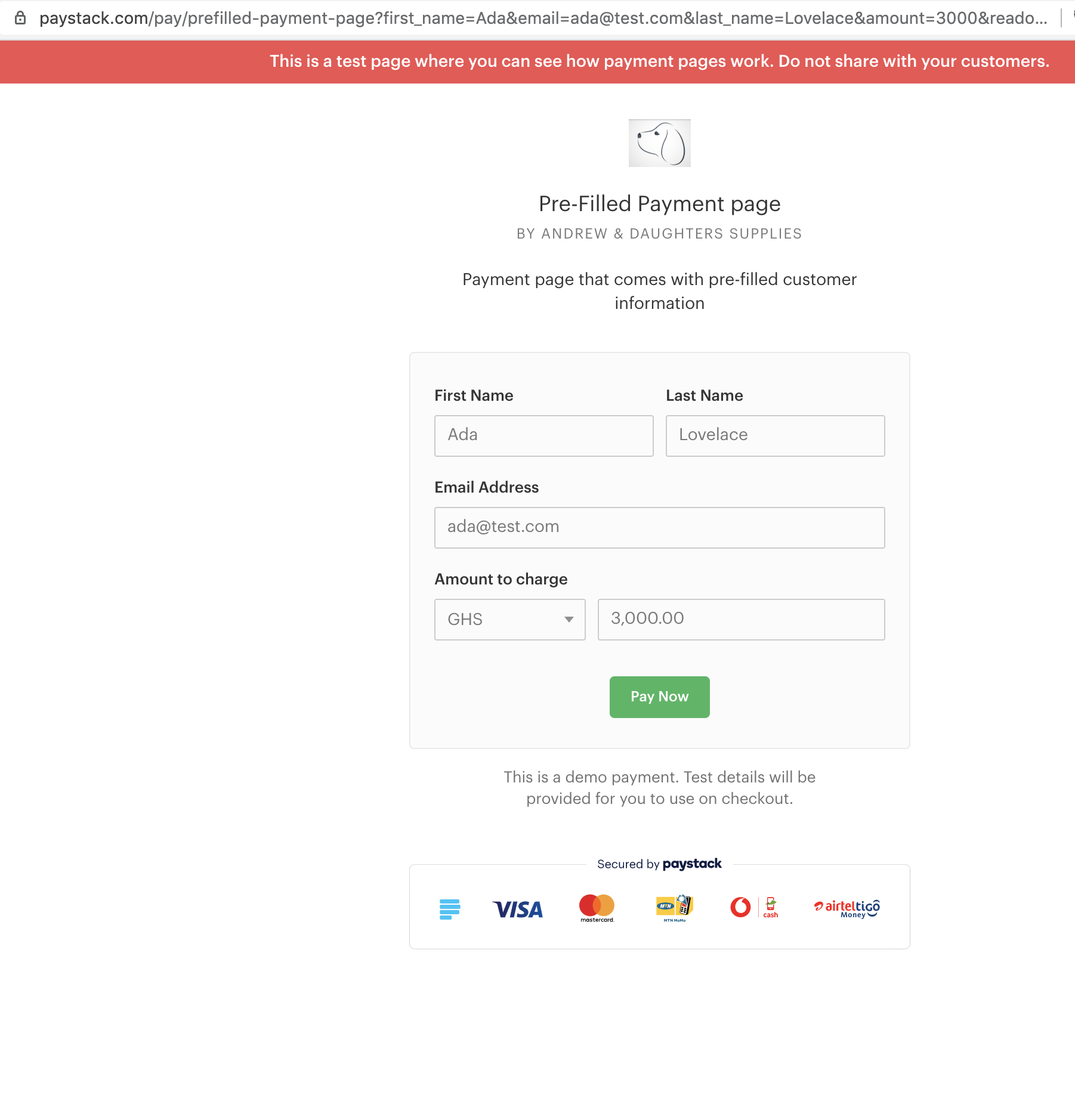Introduction
Payment Pages are the one of the simplest and most versatile ways to get paid with Paystack. Once you've created and published your live page, you simply share the link with your customers for them to pay you.
To make it easier for your customers, you can pre-fill the fields in the page, and all they have to do is complete payment. This should be used in cases where you already know some of your customer's details, like their name, email address and/or phone number.
Use Cases
A good use for this is when sending a donation request to your customers via email. You can send the link to your page that's pre-filled with the relevant donor information and payment amounts.
If you're in the lending industry, you can use pre-filled payment pages for your customers to repay their loan in cases where their stored cards failed. Here too, they'll only have to complete the payment process without entering their names or email addresses.
Schools and colleges can also use pre-filled payment pages to send out reminders for fees due. The page can be pre-filled with the student details to make it more clearer.
Pre-fill your Payment Page
To pre-fill a page with your customer's details, you simply pass the values as url parameters.
The table below shows the possible Url parameters that can be used to create payment pages.
| Name | URL Parameter | Values |
| Email Address | ada@test.com | |
| First Name | first_name | Ada |
| Last Name | last_name | Lovelace |
| Amount to charge | amount | 3000 |
| Read Only | readonly | email, first_name,last_name,amount |
Here's the link to the Payment page created with the values shown in the table above.

Here's a link to the same page, but pre-filled with another customer's information.

Making fields read only
You probably noticed that in the previous examples, the customer could still edit the fields in the form. This could obviously be a problem, as we might not want our customer to change some of the information on the page. To prevent this, we list the fields that we want to be unchangeable in the readonly parameter.


Conclusion
Now you know how to dynamically pre-fill your Payment Pages! As mentioned in the introduction, you can use this technique to offer your customers a better user experience by saving them time and ensuring accurate data collection.
If you'd like to learn more about Payment Pages and how to use them, check out this help article.

Comments
0 comments
Please sign in to leave a comment.